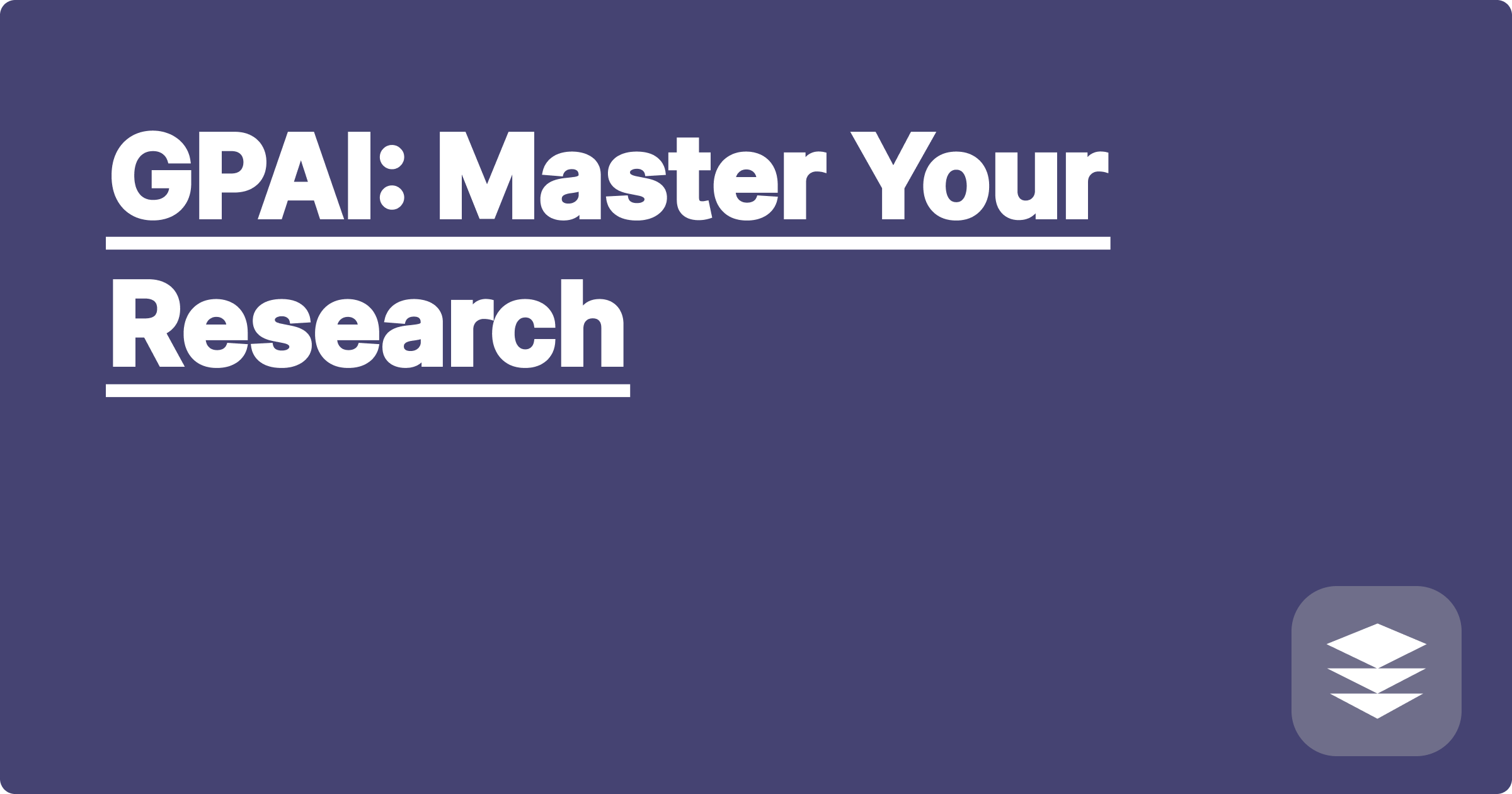
The sheer volume of information in STEM fields presents a significant challenge for students and researchers. Staying abreast of the latest discoveries, managing complex datasets, and synthesizing information for research papers can be overwhelming. Artificial intelligence offers powerful tools to navigate this information overload, enabling more efficient and impactful research. AI can automate tedious tasks, provide insights from vast datasets, and assist in formulating research questions and hypotheses.
This shift towards AI-augmented research is not just a trend; it's a fundamental change in how STEM fields operate. For students and researchers, mastering these AI tools is no longer optional but crucial for academic success and future career prospects. Understanding how to leverage AI effectively can significantly impact research productivity, allowing for deeper dives into complex topics and the potential for groundbreaking discoveries. This post will explore how Generative Pre-trained Transformer (GPAI) models can be integrated into the research workflow, providing practical examples and actionable strategies for academic success.
STEM research often involves navigating a complex landscape of existing literature, experimental data, and theoretical frameworks. Researchers spend considerable time sifting through publications, extracting relevant information, and synthesizing it into a coherent narrative. This process can be incredibly time-consuming, especially when dealing with interdisciplinary topics that span multiple fields. Furthermore, the increasing specialization within STEM disciplines creates information silos, making it challenging to connect relevant research across different areas. Traditional literature review methods often struggle to capture the nuanced relationships between different concepts and findings, hindering the development of novel research directions.
GPAI models, such as ChatGPT, Claude, and other large language models, offer a powerful solution to these challenges. These models can process vast amounts of text data, identifying key concepts, relationships, and trends within the literature. They can be used to summarize research papers, extract relevant information from large datasets, and even generate potential research questions based on existing knowledge gaps. Furthermore, AI tools like Wolfram Alpha can assist with complex calculations, data analysis, and visualization, freeing up researchers to focus on the higher-level aspects of their work. By integrating these AI tools into the research workflow, STEM students and researchers can significantly enhance their productivity and gain deeper insights into their chosen fields.
Begin by clearly defining your research question or topic of interest. This will provide the necessary focus for your AI-assisted literature review. Next, identify relevant keywords and search terms that capture the essence of your research area. Use these keywords to query academic databases and collect a set of relevant research papers. Once you have a collection of papers, you can utilize GPAI models to summarize each paper, extracting key findings, methodologies, and limitations. Feed the text of each paper into the AI model and prompt it to generate a concise summary. You can then use these summaries to quickly assess the relevance of each paper and identify key themes and trends across the literature.
Suppose you are researching the application of machine learning in drug discovery. You can use ChatGPT to analyze a set of research papers on this topic. By prompting the model with specific questions, such as "What are the most common machine learning algorithms used in drug discovery?" or "What are the limitations of current approaches?", you can quickly extract relevant information from the papers. Wolfram Alpha can then be used to analyze and visualize the chemical properties of potential drug candidates, providing valuable insights for your research. For example, you could input a chemical formula into Wolfram Alpha and obtain information on its molecular weight, structure, and potential interactions with other molecules. This integrated approach allows for a more comprehensive and efficient exploration of the research landscape.
Integrating AI tools effectively requires a strategic approach. Don't rely solely on AI-generated summaries; always critically evaluate the information and refer back to the original source material. Use AI as a tool to augment your research, not replace it. Develop strong prompting skills to elicit the most relevant information from GPAI models. Experiment with different prompts and refine your approach based on the results. Furthermore, stay updated on the latest advancements in AI and explore new tools and techniques that can enhance your research workflow. By embracing a proactive and adaptable mindset, you can harness the full potential of AI to achieve academic success.
Concluding, AI is transforming the landscape of STEM research, offering unprecedented opportunities for accelerating discovery and innovation. By mastering GPAI models and other AI tools, students and researchers can significantly enhance their productivity, gain deeper insights into their chosen fields, and contribute to the advancement of scientific knowledge. Embrace these tools, explore their capabilities, and integrate them strategically into your research workflow to unlock your full potential as a STEM researcher. The future of research is AI-powered, and the time to embrace this transformation is now.
GPAI: Programming Homework Help